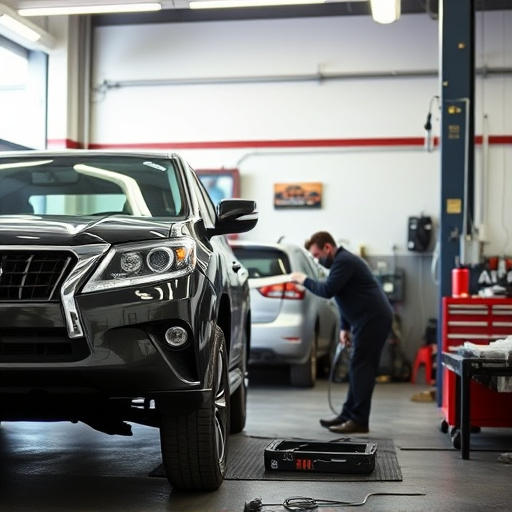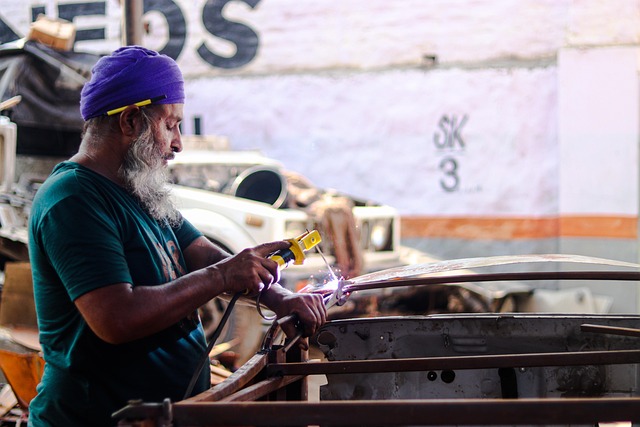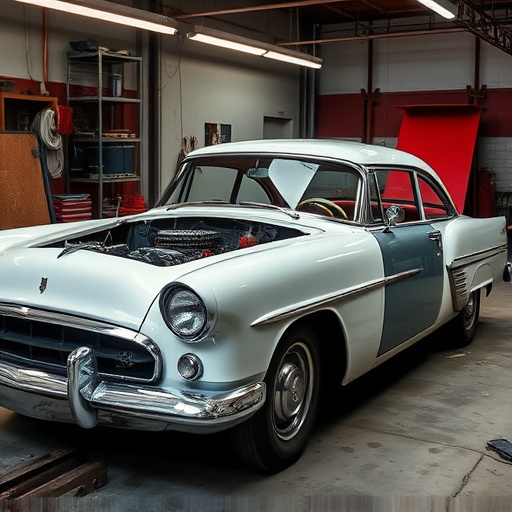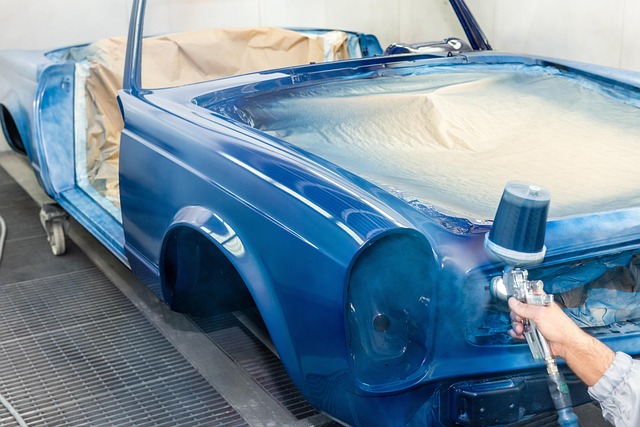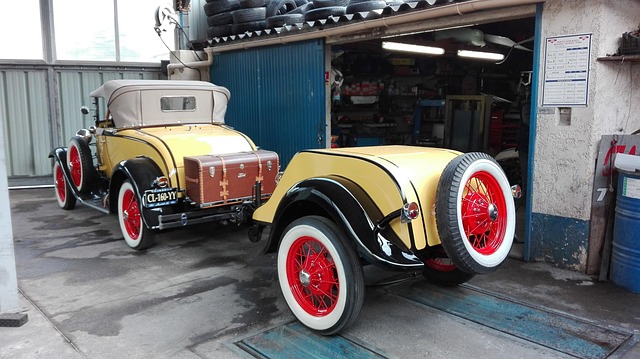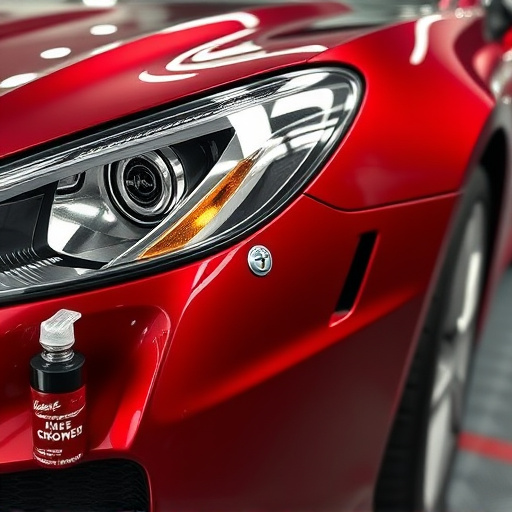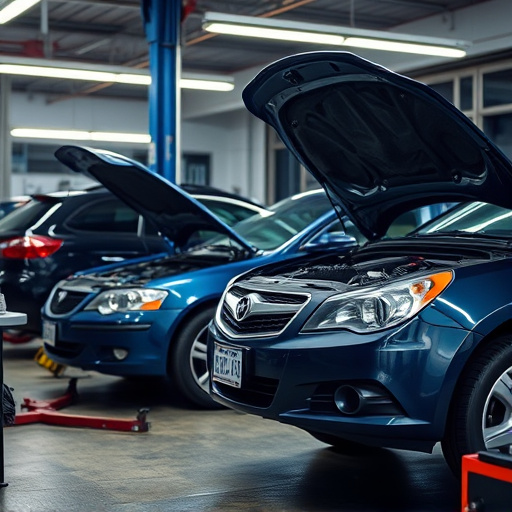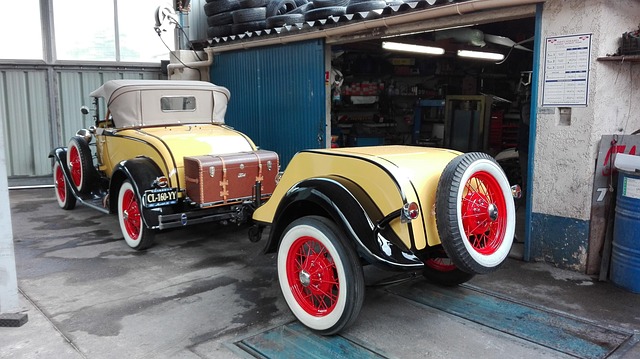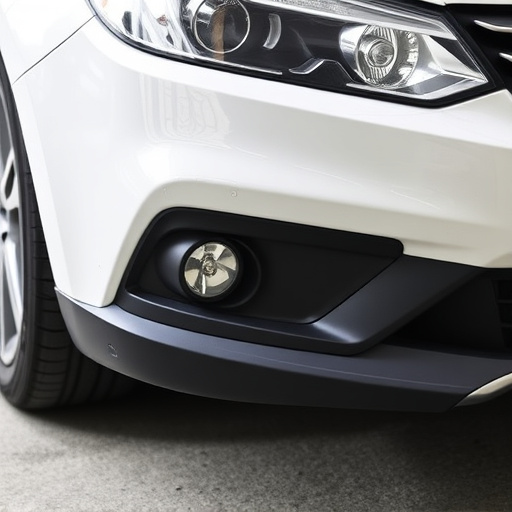Mercedes' High-Voltage Disconnect (HVD) system is a safety mechanism that isolates power sources during maintenance near high-energy components, preventing electrical hazards common in electric vehicles. EV owners should ensure bodyworkers understand and follow HVD procedures for safe and effective repairs. Safety precautions include ventilation, PPE, using dedicated tools, grounding, and never working on live batteries.
When performing welding near a Mercedes battery, understanding the importance of a high-voltage disconnect (HVD) is crucial. This essential safety measure prevents accidental electrical shorts and protects both the vehicle’s sophisticated electrical system and the welder from potential hazards. In this article, we’ll explore why disconnecting the HVD is vital before any battery welding work and delve into best practices for safely handling Mercedes high-voltage battery systems.
- Understanding Mercedes High-Voltage Disconnect
- Reasons for Disconnect Before Battery Welding
- Safe Practices for High-Voltage Battery Work
Understanding Mercedes High-Voltage Disconnect

Mercedes high-voltage disconnect (HVD) is an essential safety feature designed to isolate and protect the vehicle’s electric system during maintenance or repairs, especially near high-energy components like batteries. This system prevents accidental electrical shorts or arcs that could cause damage to sensitive parts or even pose a fire hazard—a significant concern given the growing prevalence of electric vehicles (EVs) with larger and more powerful battery packs.
The HVD process involves disconnecting the car’s main power source, usually through a dedicated switch or relay, before any welding or repair work begins on areas adjacent to the battery. This simple yet crucial step ensures that no live current flows through the circuit, allowing auto body repair specialists or collision center technicians to work safely and efficiently without worrying about electrical faults. For EV owners, understanding this process is vital when considering car bodywork services to maintain their advanced electric vehicles.
Reasons for Disconnect Before Battery Welding

When it comes to performing any sort of welding near a Mercedes battery, safety is paramount. One critical step that cannot be overlooked is the deliberate disconnection of the high-voltage system. This practice serves multiple crucial purposes in the automotive repair process.
Firstly, a Mercedes high-voltage disconnect prevents accidental electrocution or short circuits during the welding procedure. Automotive repair experts understand that batteries store substantial energy, and any misstep could lead to dangerous outcomes. By physically disconnecting the high-voltage lines, technicians ensure that the vehicle’s electrical system is safe to work on, making car body repair and other vehicle repair services more effective and secure.
Safe Practices for High-Voltage Battery Work

When conducting high-voltage battery work on a Mercedes or any vehicle for that matter, safety should always be the top priority. Before starting any welding or electrical repairs near the battery, it’s crucial to understand and implement proper procedures. The first step is to ensure the area is well-ventilated to prevent the buildup of toxic gases. Next, always use personal protective equipment (PPE), including insulated gloves, safety glasses, and an approved respirator.
A critical safe practice is to disconnect the high-voltage system using a Mercedes high-voltage disconnect tool. This step is essential in preventing accidental shocks or short circuits that could lead to severe injuries or damage to the vehicle during auto maintenance or car restoration processes. Additionally, never work on a live battery and ensure all electrical components are properly grounded. Remember, proper preparation and adherence to safety guidelines are key when conducting any electrical work, especially with modern vehicles’ complex high-voltage systems, as seen in many car paint services that require advanced technology for optimal results.
When performing any welding tasks near a Mercedes’ high-voltage battery, it’s paramount to prioritize safety by always implementing a reliable Mercedes high-voltage disconnect procedure. This step is crucial for mitigating risks associated with working around powerful electrical systems. By understanding the importance of this disconnect and adhering to safe practices, technicians can ensure a secure environment, prevent accidents, and achieve efficient welding results without compromising the vehicle’s electrical integrity.




